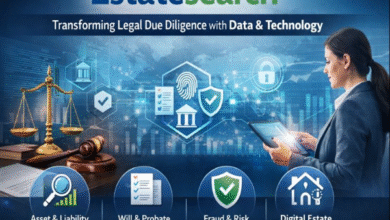How to Prepare Your Business for Digital Threats in 2025

Want to stay ahead of the evolving cyber risks and protect your business from digital threats in 2025? This article will help you stay prepared for digital threats and identify them.
Digital threats have evolved over the years, and it has become a critical aspect to consider because business organisations face a wide range of cyber threats that can hinder their growth. Since businesses are now heavily reliant on technology, no business is immune to potential incidents of cyberattacks. Hence, it is crucial to take necessary steps to make your business secure from potential digital threats. Here is how you can protect your business from potential cyber threats:
- Conducting a cybersecurity audit
- Implementing multi-layered security solutions
- Securing the data and making sure all data is encrypted
- Providing the right guidance to the employees to recognise cyber threats
In the UK, one business in every four is affected by some kind of cyber attack. 27% of companies asserted that they had experienced cyber threats within the previous 12 months. Therefore, it has become essential to implement IT support for businesses. Moreover, it has also been important for businesses to understand the landscape of the newer cyber threats.
Understand the New Cyber Threat Landscape
The cybersecurity landscape has changed massively over the years, with the introduction of new types of threats and scams detrimental to businesses. Therefore, the demand for advanced cyber essential services has increased greatly. These cyberthreats have impacted businesses greatly:
AI-powered Phishing Attacks and Deepfake Scams
Using AI algorithms, data is gathered from different sources, which helps cyber attackers to create personalised phishing messages. They use realistic language and unique structure to bypass detection. AI has also been used to create clone voices, which can impersonate the voice of trusted individuals and trick people into revealing sensitive information.
Increased Vulnerability in Remote Systems
If your team is located remotely, there is an increased risk of cyber threats. If your employees are using unprotected home networks without any proper password protection or encryption, the network becomes vulnerable and likely to be affected by cyberattacks.
IoT Risks and Cloud Misconfigurations
Cyber attackers leverage the vulnerabilities of IoT devices, which helps them to gain unauthorised access to your business network. Furthermore, they can also use the device to plan other attacks of greater scale.
So, how can you protect your businesses from potential digital threats that can breach the security of your business network and sabotage your systems? Well, there are some ways you can adopt to provide protection to your business from projected digital threats that are harmful to your business.
Conduct a Comprehensive Cybersecurity Audit
Cybersecurity audits are a comprehensive evaluation of your business’s cybersecurity practices. Since you cannot eliminate the likelihood of cyber threats, you can take necessary steps to assess how strong your cybersecurity framework is and to what extent it is going to safeguard your enterprise from potential digital threats.
Frequency of a Cyber Security Audit
Typically, you must initiate the cybersecurity audit annually. However, if you work in a more regulated industry, you can increase the frequency of cybersecurity audits.
Reviewing the Third-Party Vendor
Moreover, if you are working with a third-party vendor, your business’s attack surface increases. Hence, it is also essential to review the risks associated with the third-party vendors with the assistance of a professional cyber essential service provider.
Implement Multi-Layered Security Solutions
Implementing multiple layers of security can elevate the threat detection process and make it more responsive with the help of antivirus software and endpoint security tools. These are ways of implementing a multilayer model of cybersecurity in your business.
Multi-factor Authentication (MFA)
MFA reduces the scope of unauthorized access by verifying the identity of users using different authentication methods.
Email and Internet Filtering
Using filters to remove malicious content from email and websites also enhances internet security. This way, you will be able to recognise and block phishing endeavours and malware from entering your network.
Firewalls and Threat Detection Systems
Implementing firewalls and threat detection systems can contribute to developing a layered security structure, which can help in assessing the network security and identify potential threats attempting to enter your network.
Train Your Team to Recognise and Respond to Threats
Providing the right instruction to your team to pinpoint and respond to cyber threats will minimise your worry massively. You can consult professional IT support for businesses that can train your employees so that they do not fall prey to cyber threats like phishing and social engineering.
It is recommended for your business to create a culture of security awareness within your organisation. This will create awareness among your employees. An up-to-date security training will reduce the scope of human error and technical faults that cyber-attackers can leverage.
Secure Your Data With Backup and Encryption
Frequently taking data backups will reduce the risk of losing essential data. You need to fortify your backup infrastructure, which you can use to store your essential business data.
Consider Regular Data Backups
Frequently taking data backups will help you keep your data safe. You can use cloud storage, which is a scalable option to consider for storing the backups. Keep a copy of your data off-site, which can protect your data from threats from local networks.
Importance of Encryption
Encryption protects your data from unwanted access and supports compliance with data protection regulations like GDPR (General Data Protection Regulation). With encryption, your data is transformed into a scribble ciphertext, which cannot be cracked without the corresponding cryptographic key. This is a high-level protection mechanism that effectively safeguards business data.
To Summarise
Digital threats can hamper your business anytime, and with the right preparation, you can steer ahead of these threats. Training your crew to identify and respond to potential cyber threats will help your business become more secure and resilient to unforeseen threats. Above all, you can implement necessary protective measures with the help of an expert IT support provider for your business to evade digital threats. So, plan accordingly and integrate the right security solution into your business.
Consult a Cyber Essential Service Provider for Smooth Inclusion of Cybersecurity Measures!
Want help with the implementation of cybersecurity measures? You can contact a cyber essential service provider to protect your business from unexpected cyber threats.



